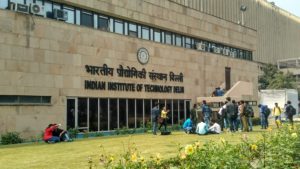India aims to establish itself as a study destination
In order to boost the Indian education system the Centre has launched the “Study in India” campaign, to attract international students to pursue their higher education from Indian colleges and universities.
Thousands of Indian students go abroad every year in order to get better education. Those who can afford it apply to the colleges of their choice and those who can’t, usually depend on the scholarships provided by universities. Even though India has the third largest education system in the world, the country has never been able to attract foreign students for higher studies. On the contrary there has been a rise of 50 pc of students who are opting for foreign institutions for their graduate and post graduate courses.
In order to boost the Indian education system the Centre has launched the “Study in India Campaign” on April 18, 2018. The campaign was launched by the Ministry of Human Resources and Development (MHRD) to attract international students to pursue their higher education from Indian colleges and universities.
The campaign aims at giving admission to foreign students from 30 countries, with a focus on South Asia, South East Asia, West Asia and Africa, to study in 160 quality higher educational institutions of India as per NIRF ranks and NAAC grades. With a budget of INR 1.5 billion for two years approved by the government, the all-new campaign aims at fostering India to be one of the topmost destinations for further education.
How is India doing in comparison to foreign institutions?
Currently there are 45,000 international students in Indian institutions. The programme aims at attracting 150,000 to 200,000 international students by the year 2023, through India’s top institutions like the IITs and IIMs. The 115 institutions of higher education that will be part of the Modi government’s plan are the National Institutes of Technology (NITs) and those which are ranked high on the National Institute Ranking Framework (NIRF) or received highest grade by the National Assessment and Accreditation Council (NAAC).
But if you compare Indians going to foreign universities for studying, there is a huge gap in numbers. According to a UNESCO data almost 300,000 Indians go overseas to study and the United States of America (US) and Australia attract more than half of these students.
The target nations are largely those that already send students to India. As per the All India Survey of Higher Education (2016-17), India drew 47,575 foreign students from across 162 different countries in that academic year with a majority of them coming from the neighbouring countries.
Nepal sent in the maximum students – 23.6 pc of the total, followed by Afghanistan (9.3 pc) and Bhutan (4.8 pc) among the SAARC nations. Nigeria and Sudan constitutes (4.4 pc) each.
According to IBEF, the education sector in India is estimated at USD 91.7 billion in FY18 and is expected to reach USD 101.1 billion in FY19E.
How will the Study in India campaign help students?
The government is aiming to attract students through the Study in India Campaign by providing them with a combination of affordable tuition fees and a chance at a culturally enriching experience. Also the policy aims to attract students primarily from Asian, African and Latin American nations by offering attractive fee waivers like General Scholarships Scheme (GSS), the Scholarship Programmes for Diaspora Children (SPDC), which is aimed at people of Indian origin (PIOs) and non-residential Indians (NRIs). Educationists are also taking the road less travelled by offering students courses like liberal arts apart from the usual courses that are available in the institutions.
There were other fellowship schemes before the Study in India campaign like the ‘Ramalingaswamy Re-entry Fellowship’, ‘Ramanujan Fellowships’ and ‘Innovation in Science Pursuit for Inspired Research’, mainly in the field of science and technology. These schemes were meant to draw scientists to build their careers in Indian institutions. Under the ‘Ramalingaswamy Re-entry Fellowship’, 312 scientists have returned to India since 2007 out of which 203 have been absorbed as Faculty. A survey of Ramanujan Fellows shows that 69.7 pc of the fellows could get permanent positions within two years of being recruited for the fellowship programme.
Earlier this year French President Emmanuel Macron signed a Memorandum of Understanding (MoU) on “mutual recognition of educational qualifications”, among other agreements with India.










